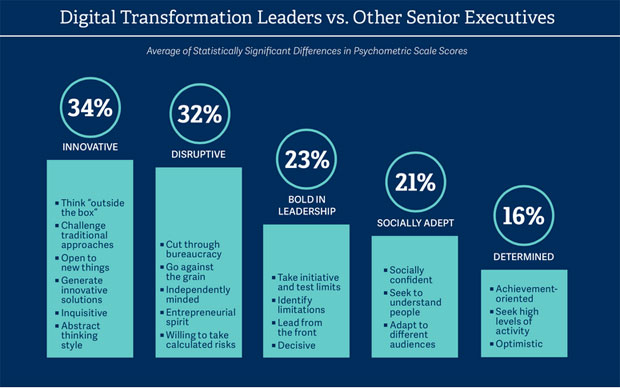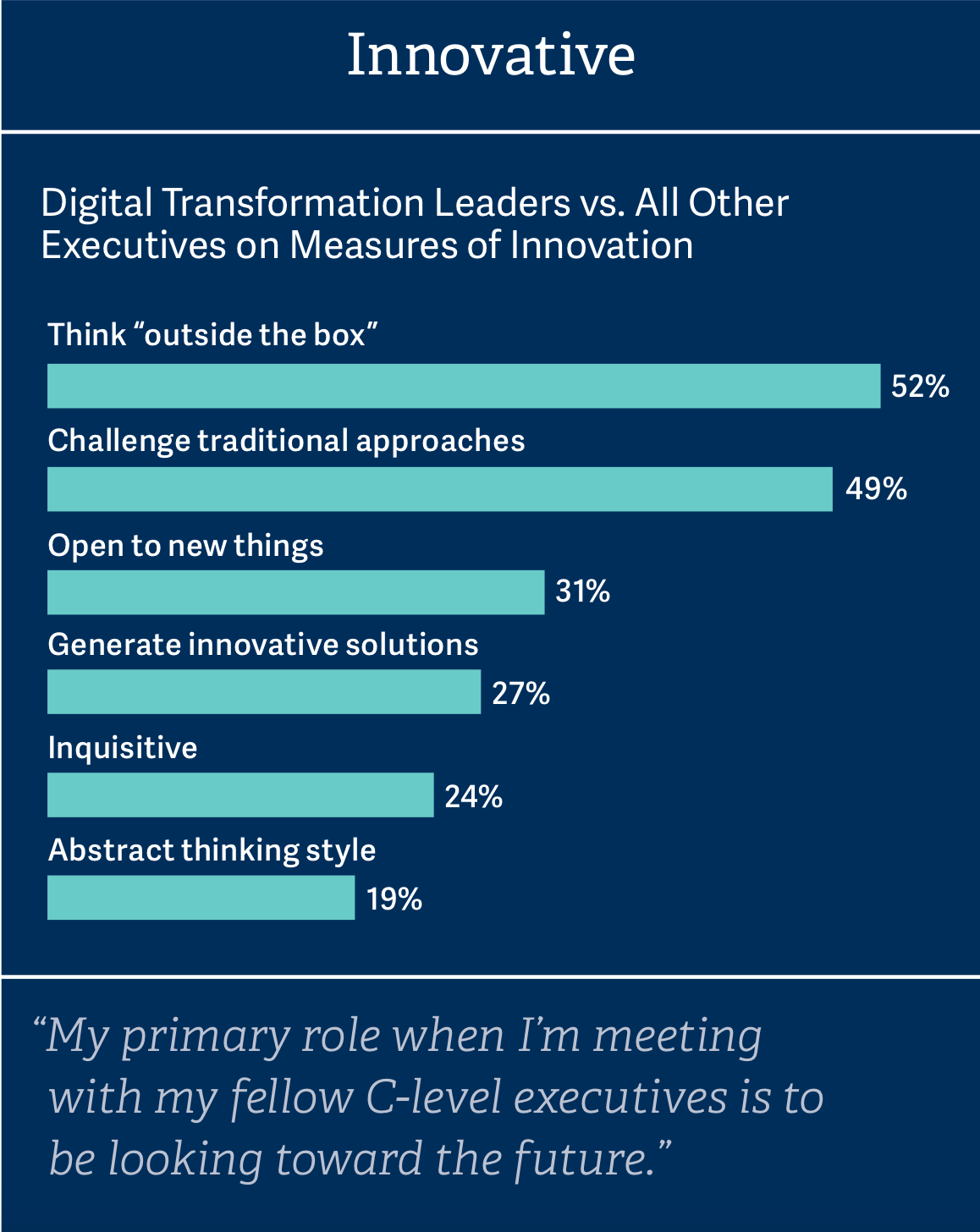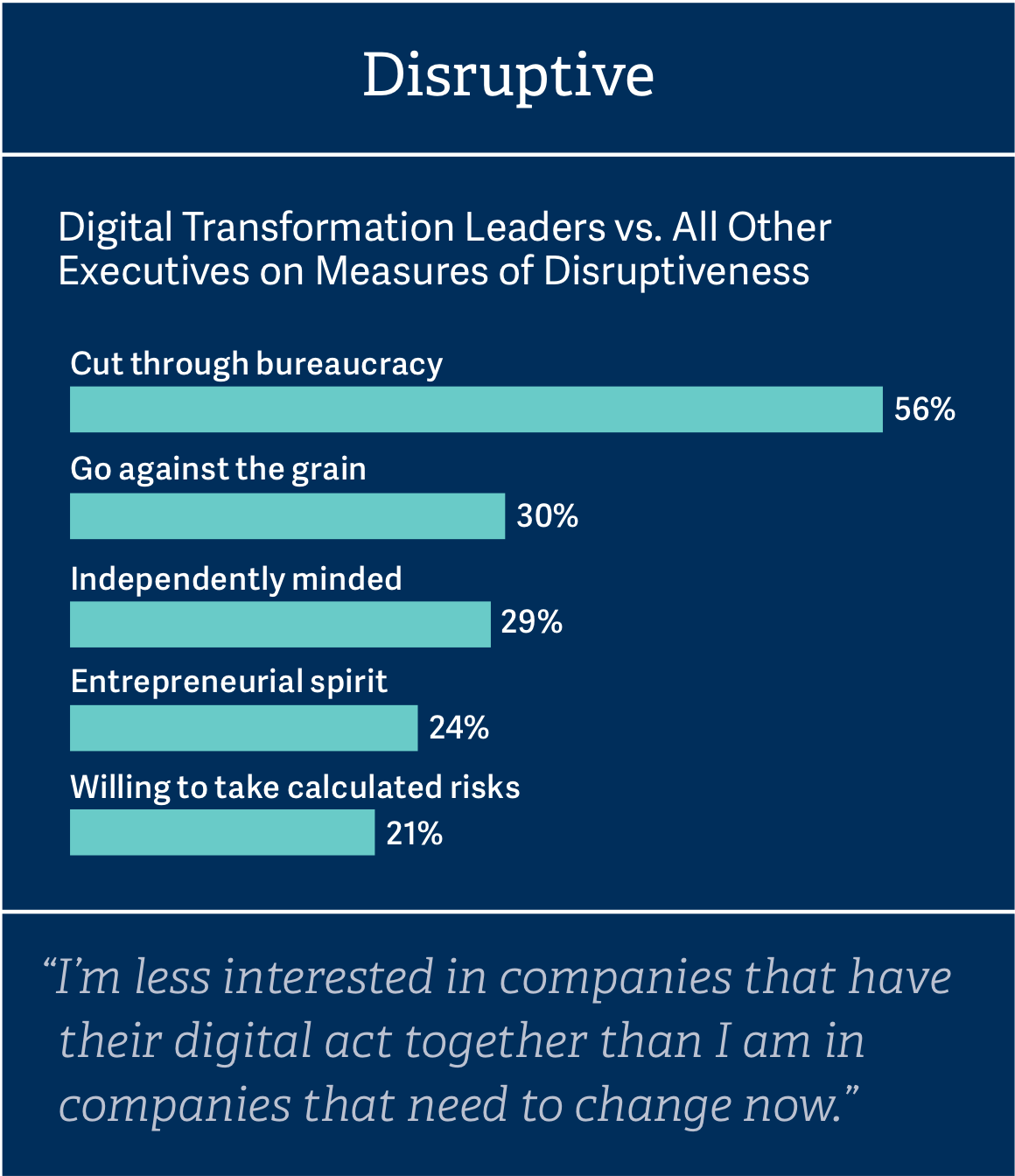Vous voulez une transformation numérique ? D’abord, embarquez la direction !
« D’après une nouvelle étude, le plus grand obstacle à la conduite d’une transformation numérique n’est pas les salariés, mais les dirigeants de l’entreprise. Nombre de sociétés ont nommé pour conduire leurs projets innovants et/ou de transformation des directeurs du numérique ou du « digital » pour les adeptes des anglicismes. Ces décideurs proviennent de différentes directions métier, dont le marketing et la DSI. Mais, quel que soit son parcours, sa mission reste la même : être la personne dans l’organisation qui assume la responsabilité de promouvoir le besoin de changement. Or, selon une étude du cabinet Russell Reynolds Associates (RRA), c’est là où les entreprises font fausse route.
La conclusion ? « Nous n’avons jamais vu une cohorte de cadres supérieurs si différents des autres groupes. Le bon leader numérique se distinguerait ainsi en étant un « perturbateur productif » ou « productive disruptors ». Et cela ne signifie pas seulement savoir avancer des idées majeures, mais englobe aussi la capacité à faire adhérer les autres « au dur travail de transformation ». « Les leaders numériques sont, sans surprise, plus des perturbateurs et innovateurs que d’autres cadres. Mais, tout aussi important, ils sont socialement plus habiles que d’autres cadres, ainsi que plus audacieux et plus déterminés à traduire les idées en actions » assure l’étude. » (source ZDNET)

A New Role for New Mandates
It is now cliché to note that “digital is changing everything.” The phrase, though tired, is unequivocally accurate. Across sectors, established companies are directly confronting the threats posed by digital:
- A leading agricultural company enables farmers to optimize crop yield by leveraging real-time data from sensors and mobile devices.
- A top technology company recently announced a multibillion dollar investment into a new Internet of Things unit dedicated to building a platform that will pull in data from billions of connected devices (everything from jet engines to refrigerators).
- Various traditional media companies have announced the launch of premium video content streaming services available to consumers without cable subscriptions.
- A prominent retailer tripled revenue after the implementation of a digital-centric strategy that integrated enhanced digital efforts with brick and mortar strategies.
What Differentiates the Top Digital Executives? The Emergence of Productive Disruptors
- Productive disruptors are 56 percent more likely to cut through bureaucracy than the broader population of senior leaders. They are successful at making change, in part, because they have little appetite for antiquated processes that stand in the way of change.
- Productive disruptors score 52 percent higher in thinking “outside the box.” Even those with a history at their organization are able to get past the precedent and groupthink that commonly cloud strategic decisions. They are creative and contrarian thinkers who produce non-obvious solutions to the challenges of digital disruption.
- Productive disruptors score 49 percent higher in their willingness to challenge traditional approaches. They are successful at persuading their C-suite colleagues to break with precedent as business conditions change. They have no patience for “the way we’ve always done things here.”
Innovative
Leading digital executives excel at communicating their insights about innovation. Jason Seiken, recently departed Chief Content Officer and Editor-in-Chief of Telegraph Media Group, says, “I often find myself having to use conceptual tools to make practical things happen. Innovation happens in the real world—but sometimes you can bring new ideas into the real world by introducing them in abstract ways, through metaphor.” Top digital transformation leaders also highlight the importance of relentlessly linking innovation to clear business outcomes. They recognize that their capability to sell untested ideas hinges on the ability to establish a clear line of sight to revenue growth or cost reduction goals.

Disruptive
In this category, the most dramatic difference between digital transformation leaders and other senior executives is the inclination to cut through bureaucracy. “That’s exactly our role,” says Seiken. “We’re there to argue that, for example, the 99 levels of approval before changing a font size on a website might be a bit much.” Large companies need some bureaucracy to manage risk and reap the benefits of scale, but top digital transformation leaders are extremely adept at cutting through the clutter of unnecessary processes and turning decisions into action.











